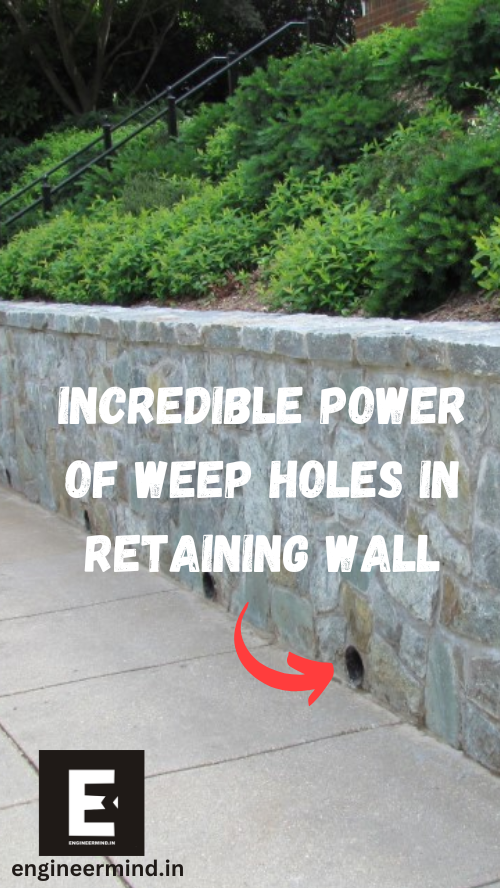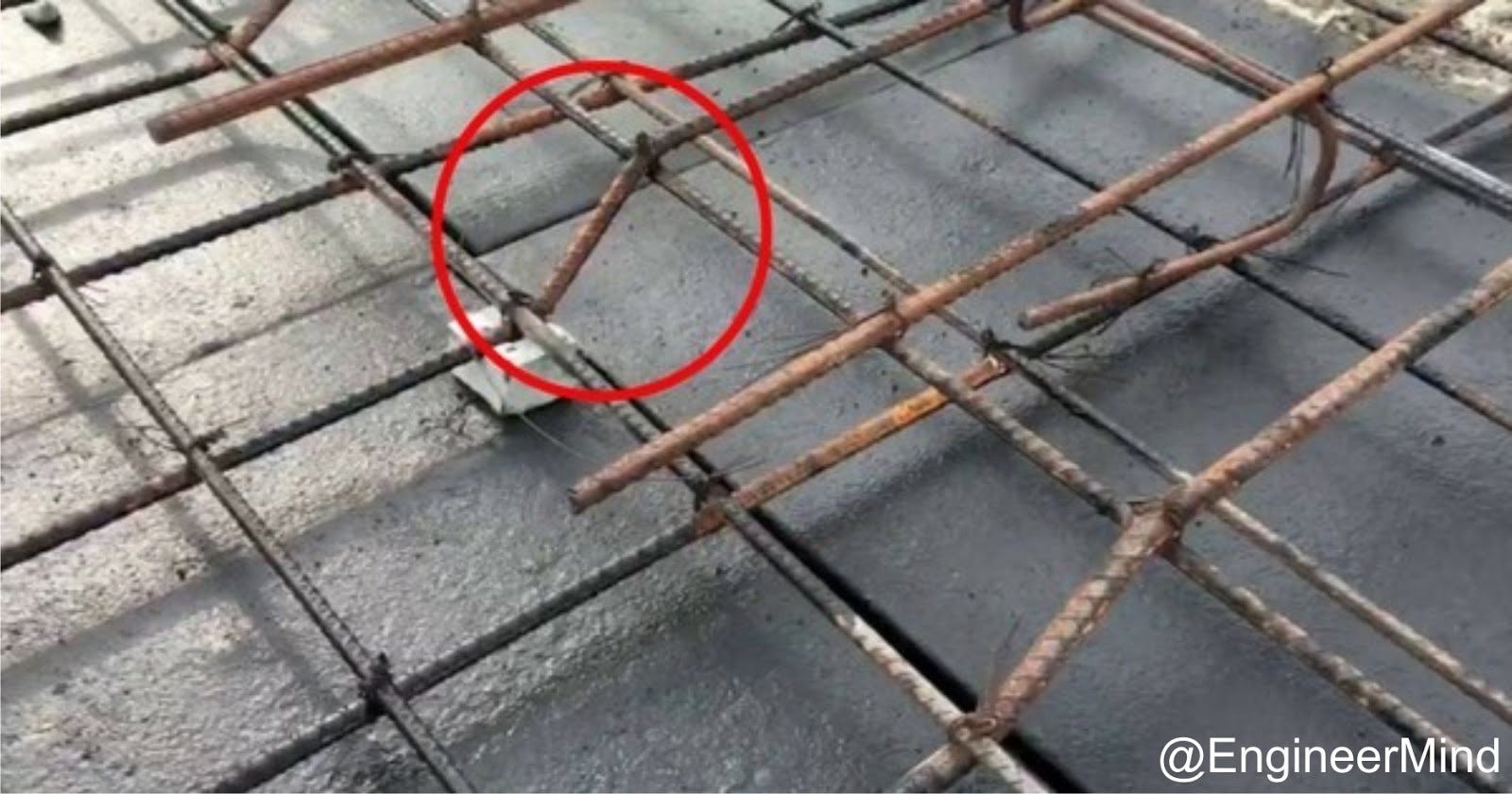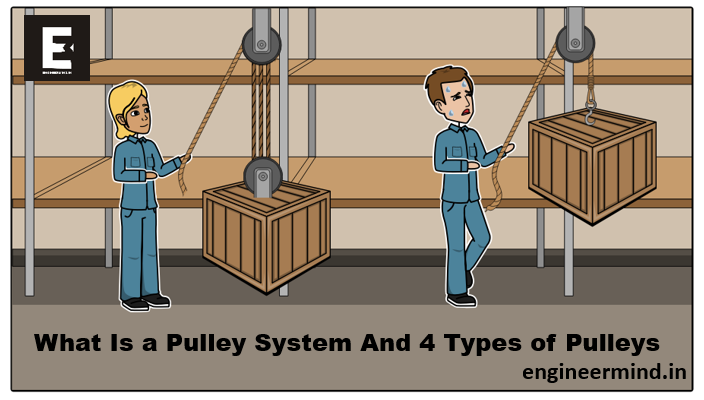Weep holes in Retaining wall is crucial features of landscaping and construction, helping to keep soil in place and prevent erosion. While retaining walls are built to last, they require a critical component to avoid failure: weep holes. Weep holes are small openings in retaining walls that allow water to drain out, preventing hydrostatic pressure from building up and causing the wall to fail.
This article will explore the various aspects of weep holes in retaining wall, including their definition, importance, types, installation, maintenance, and common issues.
Table of Contents
What are Retaining Walls?
Retaining walls are structures designed to hold back soil and other materials to prevent erosion or collapse. They are commonly used in landscaping, construction, and civil engineering projects.
There are several types of retaining walls, including gravity, cantilever, sheet pile, and anchored walls. Gravity walls rely on their weight to resist the soil pressure behind them, while cantilever walls use a horizontal base to provide stability.
Sheet pile walls are made of steel or vinyl sheets driven into the ground, and anchored walls use cables or other reinforcement to hold the wall in place.
The materials used to construct retaining walls can vary widely, depending on the purpose and location of the wall. Common materials include concrete, brick, stone, wood, and reinforced soil.
Each material has its advantages and disadvantages, and the choice of material will depend on factors such as the desired aesthetic, the cost of the materials, and the structural requirements of the project.
What are Weep Holes?
Weep holes are small openings or gaps placed in the bottom of retaining walls to allow water to drain out. They are usually spaced evenly along the length of the wall. They are designed to prevent water from accumulating behind the wall, which can cause hydrostatic pressure and damage the wall over time.
Importance of Weep Holes in Retaining Walls:
Weep holes are essential in retaining walls because they help prevent water from building up behind the wall and causing hydrostatic pressure. This pressure can cause the wall to bulge or even collapse, leading to expensive repairs and potential safety hazards. The pressure is relieved by allowing water to drain through the weep holes, and the wall remains stable and secure.
What is the purpose of weep holes in retaining wall?
Weep holes are small openings created in retaining walls to allow for water drainage that accumulates behind the wall. The purpose of weep holes is to prevent the buildup of hydrostatic pressure, which can cause the wall to fail or collapse.
When water accumulates behind a retaining wall, it exerts pressure on the wall. This pressure, known as hydrostatic pressure, can build up to the point where it becomes too great for the wall to support. Weep holes provide an outlet for the water, allowing it to drain away and preventing the buildup of hydrostatic pressure.
In addition to preventing wall failure, weep holes can also help prevent the buildup of moisture behind the wall, leading to mould and mildew growth. By allowing water to drain away, weep holes help to keep the area behind the wall dry and free from moisture.
It is important to note that the size, spacing, and location of weep holes should be carefully considered during the design and construction of a retaining wall to ensure proper drainage and prevent erosion or other issues.
Weep Hole Spacing
Weep holes play a crucial role in the health and longevity of retaining walls. One important factor to consider is weeping hole spacing. The spacing between weep holes in a retaining wall is determined by several factors, including the height of the wall, the material used, and the location of the wall.
In general, it is recommended that weep holes be spaced no more than six feet apart. This ensures that water can drain properly from the wall and prevent hydrostatic pressure buildup that can cause damage. However, there are some situations where the spacing may need to be closer together, such as when using certain materials that are more prone to water buildup.
Improper weep hole spacing can have serious consequences for a retaining wall. If the spacing is too far apart, water can accumulate and cause pressure, leading to the wall bowing or cracking. Additionally, insufficient spacing can lead to drainage issues that can cause water to pool and damage the wall’s foundation.
It is important to consider weep hole spacing carefully when designing and building a retaining wall to ensure long-term stability and performance. Following recommended spacing guidelines and considering the specific factors affecting the wall can significantly reduce the risk of damage and failure.
Weep Hole Size
Weep holes are essential in retaining walls, as they help relieve hydrostatic pressure build-up and prevent water damage. However, the effectiveness of weep holes is largely dependent on their size.
Factors that Determine Weep Hole Size
Various factors, including wall height, thickness, drainage material, and soil type, influence the size of weep holes. Generally, larger retaining walls require larger weep holes to ensure proper drainage. The type of drainage material used can also impact the size of the weep holes.
Recommended Weep Hole Size
The recommended weep hole size for retaining walls is typically between 0.25-0.5 inches in diameter. However, the size can vary depending on the factors mentioned above. It is essential to consult with a structural engineer or retaining wall contractor to determine the appropriate weep hole size for your specific project.
Consequences of Improper Weep Hole Size
Improper weep hole sizing can lead to various issues, including inadequate drainage, soil erosion, and wall failure. If the weep holes are too small, they may become clogged with debris, preventing water from draining properly. Conversely, if the weep holes are too large, they may compromise the wall’s structural integrity. Therefore, ensuring proper weep hole sizing is crucial to prevent potential damage to the retaining wall.
Types of weep holes
Weep holes are crucial for the proper functioning and longevity of retaining walls, as they allow water to drain and prevent the buildup of hydrostatic pressure. However, not all weep holes are created equal, and choosing the right type for your retaining wall is important.
The three main types of weep holes:
- saw-cut
- drill-and-pipe
- plastic weep holes
Each type of weep hole has its unique advantages and disadvantages. For example, saw-cut weep holes are inexpensive and easy to install but may clog more easily than others.
Drill-and-pipe weep holes are effective for larger retaining walls and can be easily cleaned but they may be more expensive and time-consuming to install. Plastic weep holes are highly durable and resistant to clogging but may be more expensive than other types.
Choosing the right type of weep hole depends on several factors, including the size of the retaining wall, the location, the expected water flow, and the materials used in the wall. By understanding the advantages and disadvantages of each type, you can choose the most appropriate weep hole for your specific retaining wall needs.
How to Install Weep Holes in Retaining Walls
Installing weep holes in retaining walls is crucial to prevent water damage and structural issues. Here is a step-by-step guide to installing weep holes in retaining walls.
- Determine the appropriate weep hole spacing and size based on the height of the retaining wall and the materials used.
- Mark the location of the weep holes on the retaining wall using a marker or chalk.
- Drill the holes using a masonry drill bit, making sure to drill through the full thickness of the retaining wall.
- Clean the holes with a wire brush or compressed air to remove debris or dust.
- Install weep hole inserts or screens into the holes to prevent them from getting clogged with debris or insects.
- Seal the weep holes with a waterproof sealant to prevent water from seeping into the retaining wall.
Tools and materials needed for the installation include a drill, masonry drill bit, wire brush or compressed air, weep hole inserts or screens, and waterproof sealant.
Common mistakes to avoid during installation include drilling too close to the top of the retaining wall, using the wrong size drill bit, and failing to install weep hole inserts or screens. Proper installation of weep holes is critical to the long-term health and stability of retaining walls.
Weep Hole Maintenance
Weep holes are an essential feature of retaining walls, allowing water to drain away from the wall and preventing damage caused by water buildup. However, weep holes can become clogged over time, compromising their effectiveness. That’s why performing regular maintenance on your weep holes is important.
One of the most obvious signs of clogged weep holes is water buildup behind the retaining wall. Other signs include a musty odour or mould growth. If you notice any of these signs, it’s time to clean and unclog your weep holes.
To clean weep holes, remove any debris or buildup around the holes using a small brush or scraper. Next, use a garden hose to flush out the weep holes and remove any remaining residue. If the weep holes are still clogged, you can use a wire coat hanger to clear the blockage.
Regular maintenance ensures that your weep holes remain clear and functional. By keeping them free of debris, you can ensure that water can drain away from your retaining wall, protecting it from damage and prolonging its lifespan.
Common Issues with Weep Holes
Weep holes are essential to retaining walls as they prevent water buildup, soil erosion, and potential damage to the wall. However, weep holes can develop problems that compromise their effectiveness. Here are some common issues associated with weep holes in retaining walls.
- Clogging: Weep holes can become clogged with debris, dirt, or plant roots, leading to water buildup behind the wall. This can cause pressure on the wall and eventual damage.
- Improper installation: Incorrect installation of weep holes can also cause issues. If the holes are too high or too low, water may not drain correctly, leading to seepage and wall failure.
- Insufficient number or size of weep holes: The number and size should be appropriate for the height and length of the retaining wall. If there are not enough weep holes or they are too small, water may not drain effectively, causing pressure and damage to the wall.
To prevent these issues, installing weep holes correctly, using the right number and size for the wall’s height and length is crucial. Regular maintenance, such as cleaning and unclogging the weep holes, can also help prevent problems.
If you notice any signs of clogged weep holes or water buildup behind the wall, it is essential to address the issue promptly to avoid potential damage to the retaining wall.
Conclusion
In conclusion, weep holes are a crucial component of retaining walls. They help prevent the buildup of hydrostatic pressure behind the wall, which can cause structural damage and failure. We’ve discussed the importance of weep holes, factors determining their spacing and size, different types of holes, how to install them, and how to maintain them.
To recap, weep holes allow for proper drainage and ventilation, which are essential for retaining walls’ longevity and stability. They should be spaced and sized appropriately based on wall height, soil conditions, and drainage patterns.
There are different types of weep holes, each with advantages and disadvantages, and they should be installed correctly using the appropriate tools and materials. It’s also important to maintain weep holes regularly, to prevent clogs and ensure proper functioning.
In summary, proper installation and maintenance of weep holes are critical for the long-term performance of retaining walls. Failure to address weep hole issues can lead to costly repairs and pose a safety risk. With the right care and attention, weep holes can help ensure the longevity and stability of retaining walls for years to come.








